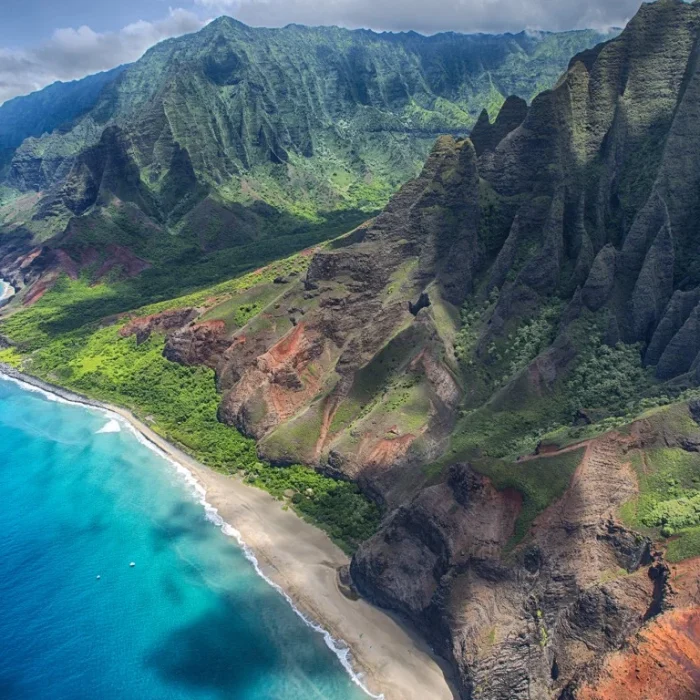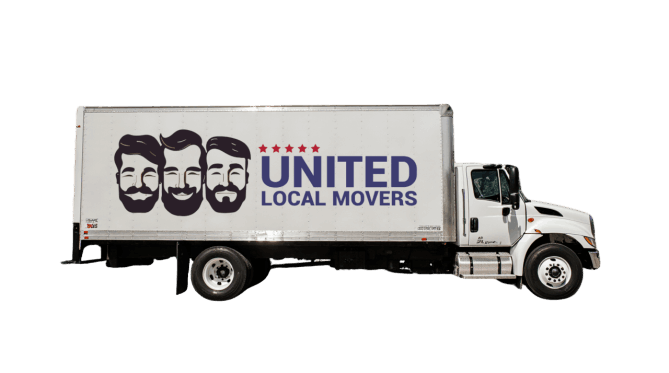Home > Interstate Moving > Moving to Hawaii > Moving to Big Island
Moving to Big Island
The Big Island of Hawaii, officially called Hawaii Island, is the largest of the Hawaiian Islands and one of the most diverse places in the world to live. Covering more than 4,000 square miles, it is nearly twice the size of all the other Hawaiian islands combined. With a population of around 200,000, the island is far less crowded than Oahu or Maui, giving it a unique balance of space, nature, and community.
Moving to the Big Island means choosing a lifestyle defined by extremes: snow-capped mountains and active volcanoes, lush rainforests and arid lava plains, bustling towns and remote rural villages. It’s an island of contrasts, where affordability (by Hawaiian standards) and natural beauty coexist with challenges like geographic isolation, limited job opportunities, and volcanic hazards.
This guide explores what life on the Big Island is really like — from the pros and cons of living there to housing, schools, economy, transportation, and moving costs — so you can make the best decision for your relocation.

Why More People Are Moving from the Mainland to the Big Island
The Big Island attracts newcomers for a variety of reasons, with affordability being one of the most significant. While living in Hawaii is never cheap, the Big Island is generally less expensive than Oahu, Maui, or Kauai. Housing costs are lower, and land is more available, making it one of the few places in Hawaii where owning a home is realistic for middle-class families.
Another draw is lifestyle. The Big Island is more rural and less commercialized than other islands, appealing to people who want a slower pace of life connected to nature. Many families and retirees move here for peace, quiet, and community.
The island’s diversity of climates is another major factor. From the wet, tropical east side (Hilo and Puna) to the dry, sunny west side (Kona and Kohala), the Big Island offers options for nearly every lifestyle.
Culture and tradition are also strong. Hawaiian heritage is deeply preserved, with hula, Hawaiian language, and traditions being an everyday part of life. For those seeking authenticity and connection to culture, the Big Island is unmatched.
Pros of Living on the Big Island
Affordability, relative to the rest of Hawaii, is a major advantage. Homes and land are more attainable, especially outside resort areas.
The diversity of climates is another pro. Whether you want constant sun, lush rainforest, or cooler mountain weather, you can find it on the Big Island.
Natural beauty is unmatched. From black-sand and green-sand beaches to active volcanoes and star-gazing at Mauna Kea, the Big Island offers endless opportunities for exploration.
The community is close-knit. With fewer tourists than Oahu or Maui, residents feel more connected, and neighbors often know one another.
Finally, the Big Island is less crowded. Traffic is lighter, beaches are quieter, and the overall pace of life is slower, which appeals to families, retirees, and anyone escaping big-city stress.

Ready to get moved? Get a FREE quote now
Book your move easily and stress-free!
Cons of Living on the Big Island
Isolation is the biggest drawback. The island is far from the mainland, and even within Hawaii, traveling to Oahu or Maui can be time-consuming and expensive.
Job opportunities are limited. Most employment is in tourism, agriculture, healthcare, or local government. High-paying roles in corporate or tech industries are rare.
Weather can be challenging. While sunny in Kona, Hilo and Puna are among the rainiest places in the U.S., with constant showers and cloudy skies.
Volcanic activity is another risk. The 2018 Kilauea eruption destroyed over 700 homes, and while eruptions are less frequent, the risk remains.
Healthcare infrastructure is limited compared to Oahu, and specialized medical care often requires flying to Honolulu.

What Life is Like on the Big Island
Life on the Big Island is slower, more rural, and deeply connected to nature. Most residents choose their side of the island based on climate and lifestyle:
West Side (Kona, Kohala): Sunny, dry, with resorts, beaches, and tourism. More expensive but offers better weather and higher-paying jobs.
East Side (Hilo, Puna): Rainy, lush, more affordable, with a strong sense of community and culture. Jobs are fewer, but housing is cheaper.
North & South: More rural and agricultural, with ranches, small towns, and limited services.
Food culture is diverse, with local farmers markets offering tropical fruits, taro, and fresh fish. Hawaiian, Japanese, Filipino, and Portuguese influences dominate the cuisine.
Community life is important. Festivals, hula events, and cultural traditions are central. Neighbors support one another, and there’s a strong emphasis on family and respect for the land.
While nightlife is limited compared to Oahu, the Big Island makes up for it with outdoor adventures, stargazing, and community gatherings.
Living Costs on the Big Island
While more affordable than other islands, the Big Island’s costs are still above the U.S. average.
| Category | Big Island | National Average |
|---|---|---|
| Housing (Rent per Month) | $1,700 | $1,570 |
| Utilities | $200 | $180 |
| Groceries | $370 | $330 |
| Transportation | $160 | $140 |
| Healthcare | $450 | $440 |
Housing is the largest expense, though still cheaper than Oahu or Maui. Groceries and utilities remain high because of shipping costs. Many residents offset expenses with solar panels, gardening, or buying local produce.

Ready to get moved? Get a FREE quote now
Ready to get moved? Get a FREE quote now
Schools and Education on the Big Island
The island is served by the Hawaii Department of Education. Schools include Hilo High, Waiakea High, Kealakehe High, and rural schools throughout the island. Performance varies, with some schools excelling and others struggling with resources.
Private schools, such as Parker School in Waimea and Hawaii Preparatory Academy, provide strong alternatives, though tuition can be expensive.
Higher education includes the University of Hawaii at Hilo, which offers programs in marine science, astronomy, and pharmacy. Hawaii Community College provides vocational training and associate degrees.
The strong focus on Hawaiian culture, bilingual programs, and local community values makes education on the Big Island unique.
Transportation and Getting Around
The Big Island is vast, and most residents rely on cars. Travel between Hilo and Kona takes more than two hours, and roads are often two-lane highways.
Public transportation is limited to Hele-On Bus, which covers major towns but is impractical for long commutes.
For air travel, Kona International Airport and Hilo International Airport connect the island to Honolulu, Maui, and the mainland.
Cycling and walking are practical only in small towns. The island’s size and rural layout make driving essential.

United Local Movers: Our Services
Relocating to the Big Island is a unique challenge that requires movers experienced with island logistics. United Local Movers specializes in Hawaii relocations, handling shipping, packing, and delivery with precision.
Whether moving into a condo in Hilo, a resort-area home in Kona, or a rural property in Puna, our team ensures safe, professional service.
With customized moving plans and transparent pricing, United Local Movers makes island relocations smooth and stress-free.
Average Cost to Move to the Big Island
Relocations to the Big Island are more expensive than mainland moves due to ocean shipping.
| Move Type | Estimated Cost |
|---|---|
| Local Move (1-2 Bedrooms) | $1,200–$2,400 |
| From Mainland U.S. | $5,000–$10,500 |
| Full Packing Services | + $500–$1,000 |
| Storage Options | $150–$300 per month |
United Local Movers manages the logistics of Hawaii moves, ensuring belongings arrive safely and on time.


How to Choose the Right Moving Company
When moving to the Big Island, it’s critical to choose movers with Hawaii experience. Always confirm licensing, insurance, and shipping partnerships.
Look for companies that provide detailed timelines, as ocean freight can add weeks. Customer reviews are essential to gauge professionalism and reliability.
United Local Movers combines local expertise with nationwide reach, making it the trusted choice for Hawaii relocations.
Final Thoughts
The Big Island is one of the most unique and beautiful places in the world to live. Its affordability (relative to Hawaii), diversity of climates, and cultural richness make it an attractive destination. While challenges like isolation, limited jobs, and volcanic risks exist, the lifestyle benefits often outweigh them.
For families, retirees, and professionals seeking connection to nature, culture, and community, the Big Island delivers. And with United Local Movers, your relocation can be smooth, professional, and stress-free.




